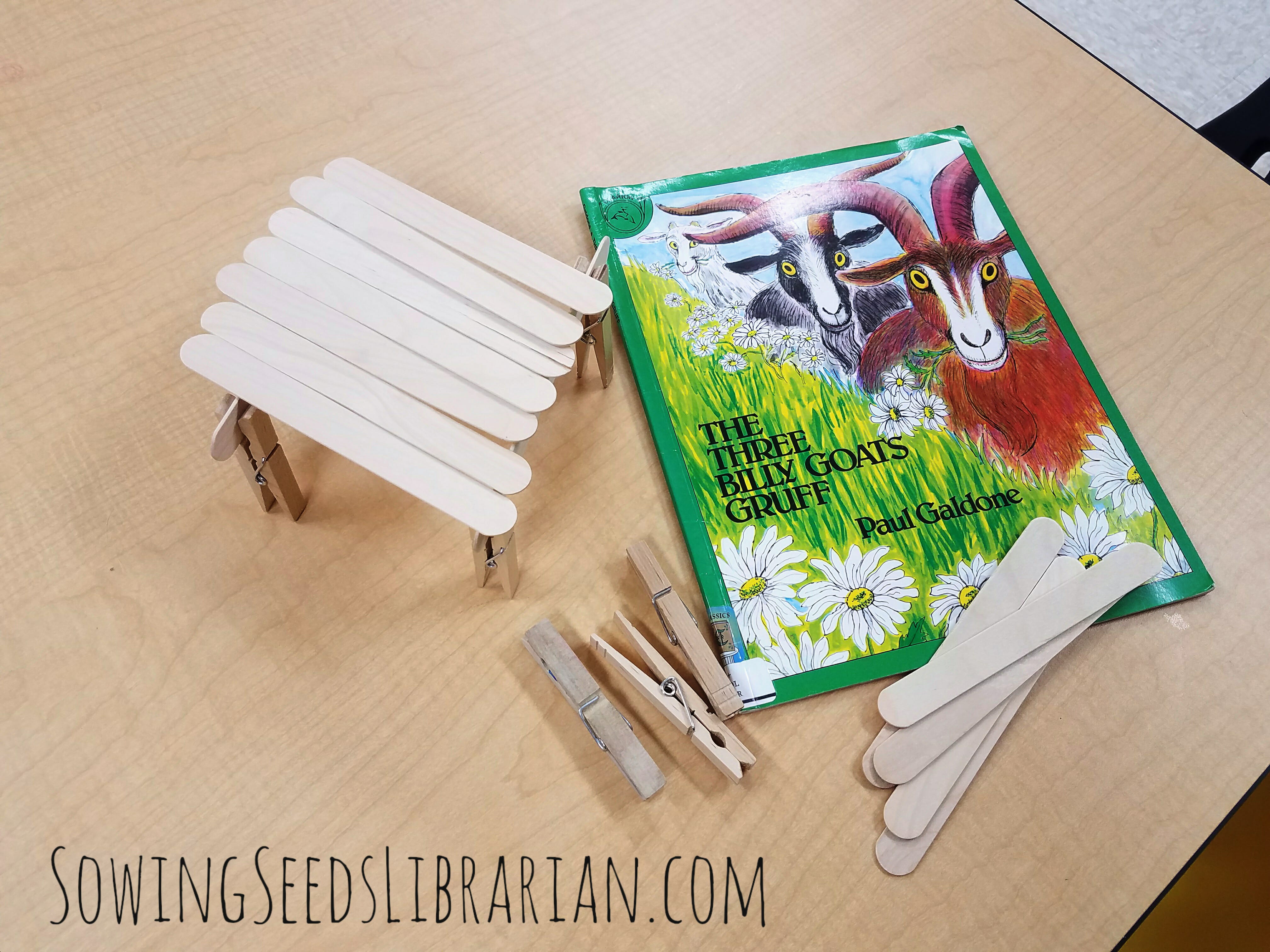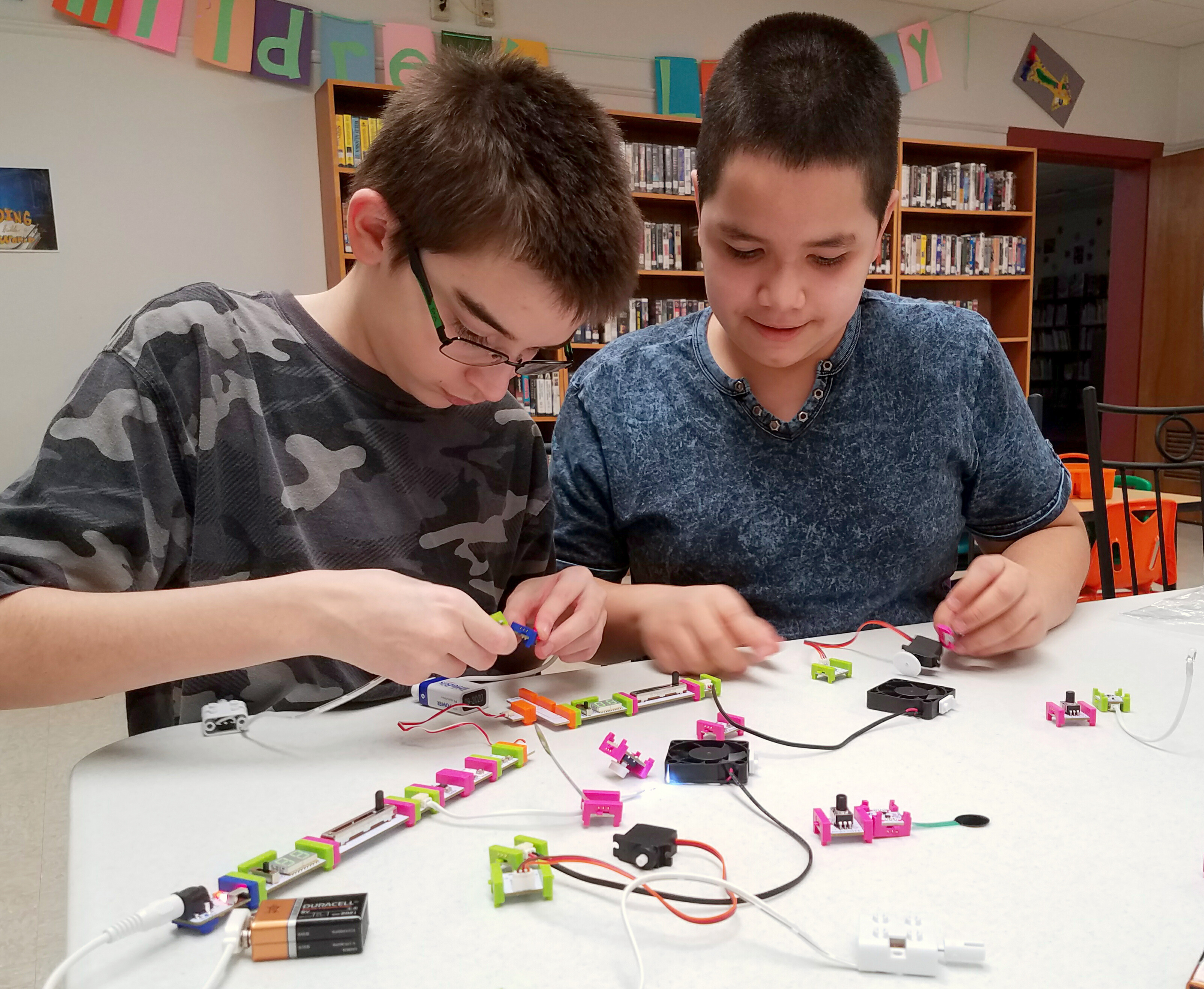The skinny: We did this program as both a book club program for Kindergarten-5th grade and as a Kindergarten class outreach visit. Both programs went great! These programs were born out of a mission of mine to incorporate more literacy into our STEM programming. What better way to do that than read a great fairy tale, incorporate literacy vocabulary by talking about the characters and what the problem was in the book, and then engineering our way to a better solution?
The cost: $0. We already had all the supplies on hand. But, if you don’t, you can buy clothes pins online for $6-10 for a pack of 100 and the tongue depressors for about $6 for a pack of 500. And, all the supplies are re-usable! You might also want to buy some small goats for the kids to play with as they are building their bridge. I searched on Amazon for “toy goat” and found some great options, like this pack of 25 for only $10.

Supplies needed: Clothespins, wide craft sticks, and the book, The Three Billy Goats Gruff by Paul Galdone.
Resources: Check out the Teach Beside Me blog where I got the bridge building idea for this program!
Time: Plan about 30-40 minutes for this program.
How it went: For the book club I did this as part of our Cookies and Milk book club series. We hold this on Tuesdays at 3:45 pm. To prep, I buy a half gallon of milk and a value sized bag of Cookie Crunch cereal. I never know how many kids will come so when they arrive I pour the milk and cookies while chatting with the kids about anything they think is important. Once they have their afterschool snack, I introduced our book, The Three Billy Goats Gruff by Paul Galdone. I had kindergarten through 5th graders, so everyone knew the story already. But, they had a glass of milk and another glass of cookies, so why not be excited? I read the story, having the kids help with the narration by asking, “And what did the troll say?” just to keep everyone engaged. After reading the story we talked about who the characters were (The Three Billy Goats Gruff and the Troll) and what the Billy Goats’ problem was (they did not have a safe bridge to cross). I brought out our clothes pins and tongue depressors and asked them to make me a bridge that would be safe. Some of the kids struggled with this, so I showed them a few ways to build. What I really liked about this was that it was simple enough for the youngest kids to do on their own, and yet difficult enough for the older kids to come up with bigger and better ways to build.
Have you tried Fairy Tale STEM? What are your favorite programs? I would love to hear from you!

